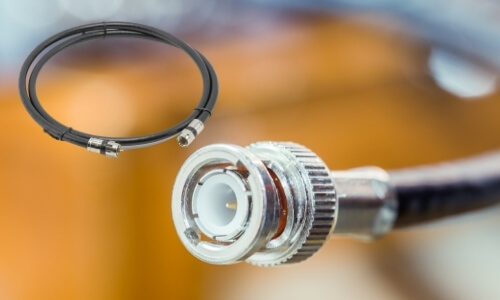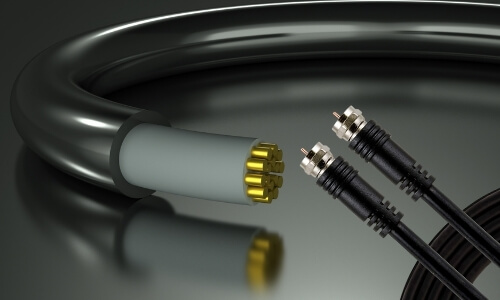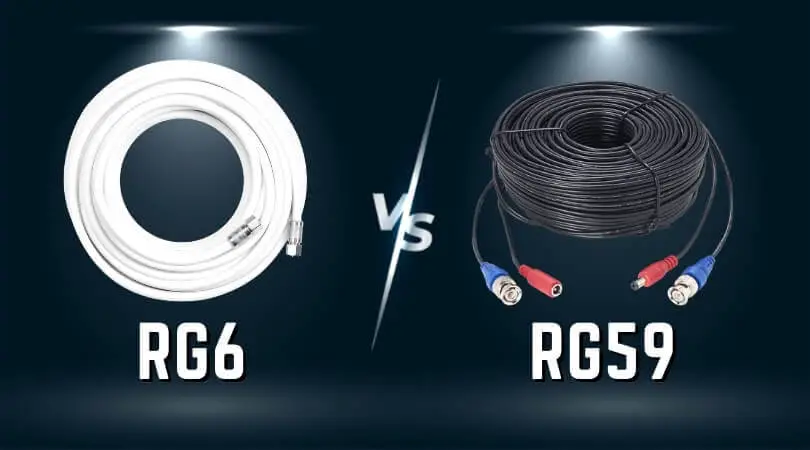Coax, or coaxial cables are used for standard electrical installations such as satellite TV, internet connection, etc. While there are many different types of these cables in the market, there are two common ones: RG6 and RG59. If you are into DIY electrical projects or even have basic information about cables, you will likely be familiar with these names.
Table of Contents
However, it is often confusing to understand their different purposes. Can they be used interchangeably? Do they have specific properties that we must keep in mind while making a choice? Of course.
To know the differences and the uses of these coax cables, let’s first look at what RG cables are.
What Are RG Cables?

RG in the coaxial cable stands for “Radio Guide”, it a rating that is given to different types of wires for distinguishing it with ease. This term is quite old and was first used in military communication. The radio number or RG number helps to determine the specifications of the cable. However, these numbers are randomly assigned, so there is no need of looking at the order of numbers for these cables.
Nowadays, RG cables are used for internet connection, TV signals, and more. Although there are different versions of RG cables, the most frequently used are RG6 and RG59 cables.
And as these two RG cables are used even today, we will help you distinguish between RG6 and RG59.
What is the Difference Between RG6 and RG59 Coax Cables?
To understand the differences between RG6 and RG59 coax cables, we first look at the properties of both these cables individually. Studying the properties can help us determine the applications and uses of both these cables.
RG6 Cables

These cables are also denoted as RG6/U cables, where “U” stands for Utility. The cables are used for general uses such as broadband internet, satellite TV, cable TV, and more. RG6 cables offer an increased bandwidth as thick copper conductors are used in them. It also has less attenuation ( loss of energy) than other cables, which makes it suitable for using it if you specifically want to use longer cables.
Properties of RG6 cables:
- RG6 cables are made of foil shields and braided aluminum shields.
- They have better insulation properties.
- The inner conductor is thicker at the 18 AWG copper center. This helps RG6 cables provide more extended distance proficiency and better bandwidth.
- The frequency range is better, which means if you are looking for a cable to serve the purpose of a higher frequency range, RG6 is your answer.
- RG6 cables have low attenuation even though the cables are long.
- Problems with RG6 come when you need them to work below 50 Mhz. They are not efficient in this case and you will need to use RG59. But these cables work better with frequencies over 50Mhz.
- Fewer signal loss problems are reported with RG6.
RG59 Cables

RG59 cables are also made of copper wire conductors; however, the conductor for these cables is thinner than RG6 cables. It was used in older houses and buildings for television connections. This kind of cable works better at transmitting low-frequency signals.
Properties of RG59 cables:
- RG59 cables are made of 95% copper shields, which helps them block RFI inclusion.
- Insulation is not as good as RG6 cables.
- The inner conductor of RG59 cables is a thin – 20 AWG copper centre. This makes its diameter smaller than RG6.
- The frequency range is lower. RG6 can work even with 3Ghz, but RG59 may start showing inefficiency upon touching 2 GHz.
- If you need to work below 50 Mhz, RG59 is the way to go.
- RG6 provides lower attenuation when compared to RG59. This is a significant drawback for RG59 cables.
Uses of RG6 vs RG59
As aforementioned, RG6 and RG59 are used for different purposes. Let’s take a look:
- RG6: Satellite DSS applications, CATV,
- RG59: Plasma TV, component video, video projectors, and other baseband video applications, CCTV. One cannot use these cables for satellite feeds because they do not have foil shields.
Price Difference: RG6 vs RG59
Even though their applications are quite different and one cannot interchange cables for use, it is safe to say that RG6 has better properties than RG59. This is reflected in the price tag as well. RG6 coax cables are generally more expensive. If you compare the prices of RG6 and RG59 cables of the same length, RG6 will be more costly due to its thicker shielding and insulation. RG6 cables also cut down the time of installation and are durable, so depending upon the use of the cables, you can opt for either RG59 or RG6.
Now that you know the differences between the two common coaxial cables, we assume you will make the right choice for your purchase. Remember – it is not the price that you should be looking at but the usage to pick the right one.

Leave a Reply